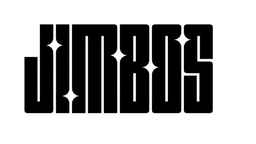Does Your Paint Really Need Correction—Or Just a Good Detail?
Paint correction is a powerful tool—but not every car needs it. Here’s how to tell if your paint needs a full correction, a light polish, or just a good detail and protection.
What Is Paint Correction, Really?
Paint correction means using a machine polisher and abrasive polish to remove clear coat defects like:
- Swirl marks
- Light scratches
- Oxidation or faded clear coat
- Water spot etching
It’s different from just “detailing,” which usually involves washing, claying, and applying protection.
Signs You May Need Paint Correction
- ❌ Paint looks dull even after washing
- ❌ Swirls or spider-webbing under sunlight
- ❌ You see fine scratches from automatic car washes
- ❌ Water no longer beads and the paint feels rough
When a Good Detail Is Enough
If your paint looks glossy, smooth, and free of visible swirls under a light—even if it’s not perfect—you may not need correction.
In that case, a proper decon and protection routine is plenty. Here’s a great quick process:
- Wash with The Super Soaper
- Clay with a mitt or bar
- Apply Tough As Shell or Gloss Boss
How to Check for Paint Defects
Use a swirl finder light or your phone’s flashlight. Point it at the paint in a shaded garage or evening light. You’ll clearly see:
- Swirl marks (circular scratches)
- RIDS (random isolated deep scratches)
- Fading, haze, or water spot etching
Safe Correction If You Need It
If you spot clear coat defects, you don’t need a 3-step correction. Start with a safe, pad-dependent polish like Picture Perfect Polish. It gives you control and pro-level results with minimal risk.
- Cut & Finish Pad – for moderate to heavy correction
- Black Finishing Pad – for refining black or soft paint
Correction vs. Protection Summary
| Scenario | Recommended |
|---|---|
| Paint feels rough, no gloss | Decon + protection |
| Swirls + haze under sunlight | Polish with Picture Perfect Polish |
| Glossy paint, no visible defects | Apply Gloss Boss |
Related Posts
Frequently Asked Questions
Is polishing always necessary before ceramic coating?
No. If the paint is already clean and defect-free, you can go straight to protection. But most vehicles benefit from at least a light polish first.
How do I know if I have swirl marks?
Shine a flashlight at your paint in a shaded area. You’ll see light spider-webbing if swirls are present.
What if I only see light haze or dullness?
That’s a perfect time to use Picture Perfect Polish with a soft pad for a quick clarity pass.
Can polishing damage my clear coat?
Only if done incorrectly. Using a DA machine with pad-dependent polish is extremely safe for most users.



